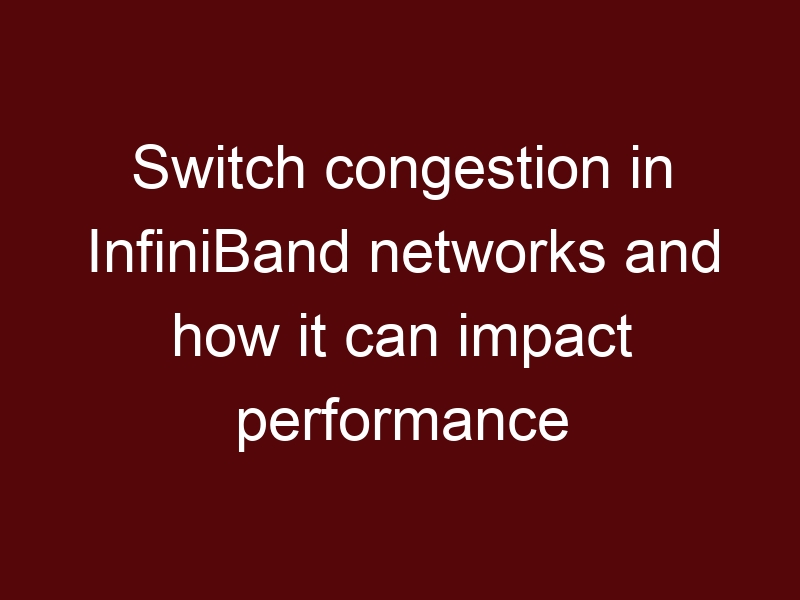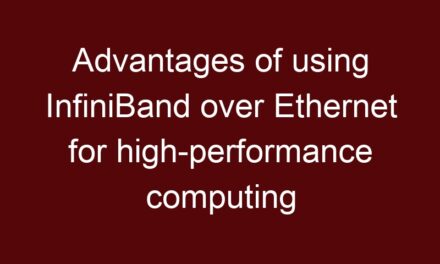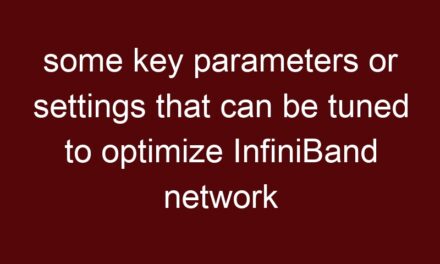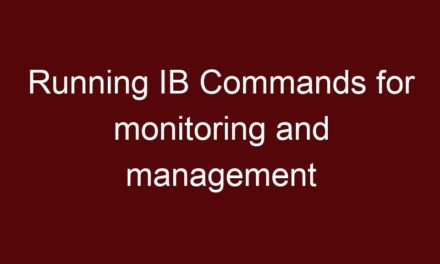Switch congestion in InfiniBand networks refers to a situation where the available bandwidth within a switch is insufficient to handle the volume of data traffic passing through it. This congestion can lead to performance degradation, increased latency, and reduced overall network efficiency. Switch congestion is a common concern in high-performance computing (HPC) environments where data-intensive applications generate substantial traffic.
Causes of Switch Congestion:
- High Traffic Load: When the volume of data traffic exceeds the capacity of the switch’s ports or backplane, congestion can occur.
- Contention: When multiple devices connected to the same switch attempt to transmit data simultaneously, they contend for the available bandwidth, potentially leading to congestion.
- Uneven Distribution: If traffic is unevenly distributed across ports, some ports might become congested while others remain underutilized.
- Misconfigurations: Incorrect QoS settings, buffer sizes, or routing policies can lead to suboptimal traffic management and cause congestion.
Impact on Performance:
Switch congestion can have several negative impacts on network performance:
- Increased Latency: Congestion causes queuing delays, leading to higher packet transmission latencies. This can be especially detrimental to latency-sensitive applications.
- Packet Loss: In extreme cases, buffer overflows can occur, causing packets to be dropped. This requires retransmissions, leading to further delays and reducing throughput.
- Reduced Throughput: As congestion increases, the available bandwidth for each connection decreases, reducing the overall throughput of the network.
- Performance Degradation: Congestion affects the performance of all applications using the congested switch, potentially slowing down critical workloads.
- Unpredictable Behavior: Congestion can result in unpredictable network behavior, making it difficult to guarantee performance levels for different applications.
Congestion Management:
To mitigate the impact of switch congestion, InfiniBand networks incorporate congestion management mechanisms:
- Buffer Management: InfiniBand switches use internal buffers to temporarily store incoming data packets. Proper buffer management and allocation are crucial to prevent buffer overflows and ensure smooth data flow.
- Congestion Notification: Switches can provide congestion notification to devices by setting Congestion Control (CC) bits in packets. Devices receiving these notifications can adjust their transmission rates to alleviate congestion.
- Priority Flow Control (PFC): PFC is a link-level mechanism that allows devices to pause data transmission when congestion is detected. PFC helps prevent congestion from propagating through the network.
- Adaptive Routing: Some InfiniBand networks use adaptive routing algorithms that dynamically adjust data paths to avoid congested links.
- QoS and Bandwidth Allocation: Proper QoS settings and bandwidth allocation ensure that critical traffic receives the required resources, preventing less important traffic from causing congestion.
In summary, switch congestion in InfiniBand networks can significantly impact network performance by increasing latency, reducing throughput, and causing unpredictability. Effective congestion management mechanisms are essential to maintain optimal network operation, especially in HPC environments where data-intensive applications demand efficient and reliable communication.





